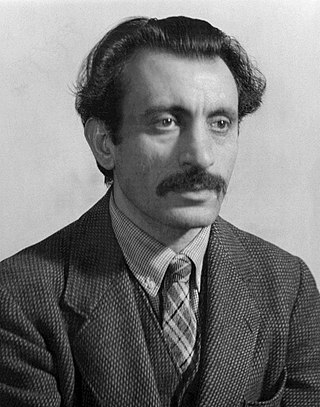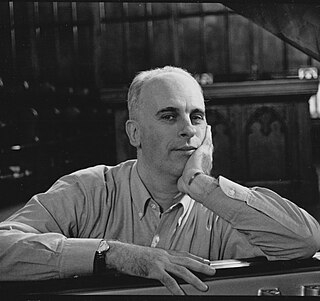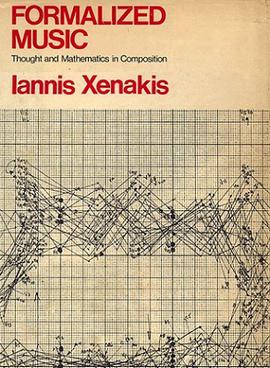
Giannis Klearchou Xenakis was a Romanian-born Greek-French avant-garde composer, music theorist, architect, performance director and engineer.

Arshile Gorky was an Armenian-American painter who had a seminal influence on Abstract Expressionism. He spent the last years of his life as a national of the United States. Along with Mark Rothko, Jackson Pollock and Willem de Kooning, Gorky has been hailed as one of the most powerful American painters of the 20th century. The suffering and loss he experienced in the Armenian genocide had crucial influence at Gorky’s development as an artist.

Ararat is a 2002 historical-drama film written and directed by Atom Egoyan and starring Charles Aznavour, Christopher Plummer, David Alpay, Arsinée Khanjian, Eric Bogosian, Bruce Greenwood and Elias Koteas. It is about a family and film crew in Toronto working on a film based loosely on the 1915 defense of Van during the Armenian genocide. In addition to exploring the human impact of that specific historical event, Ararat examines the nature of truth and its representation through art. The genocide is disputed by the Government of Turkey, an issue that partially inspired and is explored in the film.
The culture of Armenia encompasses many elements that are based on the geography, literature, architecture, dance, and music of the people.

Metastaseis is an orchestral work for 61 musicians by Iannis Xenakis. His first major work, it was written in 1953–54 after his studies with Olivier Messiaen and is about 8 minutes in length. The work was premiered at the 1955 Donaueschingen Festival with Hans Rosbaud conducting. This work was originally a part of a Xenakis trilogy titled Anastenaria but was detached by Xenakis for separate performance.

Roger Woodward is an Australian classical pianist, composer, conductor and teacher.
UPIC is a computerised musical composition tool, devised by the composer Iannis Xenakis. It was developed at the Centre d'Etudes de Mathématique et Automatique Musicales (CEMAMu) in Paris, and was completed in 1977. Xenakis used it on his subsequent piece Mycènes Alpha (1978) and two other works. It has also been used by composers such as Julio Estrada,, Jean-Claude Risset, Jorge Antunes, François-Bernard Mâche, Takehito Shimazu, Gérard Pape, and Curtis Roads. Aphex Twin implies that he uses UPIC in an interview where he is asked what software he uses and he replies that, "UPIC by Xenakis puts almost everything else to shame [and] it's under 1mb".

Formalized Music: Thought and Mathematics in Composition is a book by Greek composer, architect, and engineer Iannis Xenakis in which he explains his motivation, philosophy, and technique for composing music with stochastic mathematical functions. It was published in Paris in 1963 as Musiques formelles: nouveaux principes formels de composition musicale as a special double issue of La Revue musicale and republished in an expanded edition in 1981 in Paris by Stock Musique. It was later translated into English with three added chapters and published in 1971 by Indiana University Press, republished in 1992 by Pendragon Press with a second edition published in 2001, also by Pendragon. The book contains the complete FORTRAN program code for one of Xenakis's early computer music composition programs GENDY. It has been described as a groundbreaking work.
Evryali is a piece for solo piano composed by Iannis Xenakis in 1973. It is based on a technique Xenakis invented in early 1970s, called arborescences—proliferations of melodic lines created from a generative contour. The title refers to the name of one of the Gorgon sisters, and is also Greek for open sea.
Herma is a piece for solo piano composed by Iannis Xenakis in 1961. About ten minutes long, it is based on a formulation of the algebraic equations of Boolean algebra, and is also an example of what Xenakis called symbolic music.

Irvine Arditti is a British violinist, as well as the leader and founder of the Arditti Quartet.
Carey Lovelace is an American art journalist, playwright, curator, and producer based in New York.
Armenian genocide in culture includes the ways in which people have represented the Armenian genocide of 1915 in art, literature, music, and films. Furthermore, there are dozens of Armenian genocide memorials around the world. According to historian Margaret Lavinia Anderson, the Armenian genocide had reached an "iconic status" as "the apex of horrors conceivable" prior to World War II.

Keqrops is a composition for piano and orchestra by Greek/French composer Iannis Xenakis. Due to the prominent role of the piano soloist, it has often been classified as a piano concerto. It was completed in 1986.
Yenovk Der Hagopian was a 20th-century American-Armenian artist, sculptor and musician.

Anna Walinska was an American painter. She is known for her colorful works of the Modernist period, collages done with handmade Burmese Shan paper, and a large body of works in various media on the theme of the Holocaust. Works by Walinska are included in numerous public collections, most notably the National Portrait Gallery, the National Museum of Women in the Arts, the Smithsonian American Art Museum, the United States Holocaust Memorial Museum, the Rose Art Museum at Brandeis University, the Denver Art Museum, The Jewish Museum in New York, the Herbert F. Johnson Museum of Art at Cornell, the Zimmerli Art Museum at Rutgers University, the Judah L. Magnes Museum in Berkeley, and Yad Vashem. Walinska's scrapbooks of the Guild Art Gallery, along with sketchbooks and journals on world travel are included in the Archives of American Art at the Smithsonian Institution.

Khoaï, also referred to by its original Greek title, Χοαί, is a 1976 composition for solo harpsichord by Iannis Xenakis.
Eonta is a composition for piano, two trumpets, and three tenor trombones by Iannis Xenakis. It was written in 1963–64, and was premiered on December 16, 1964, by the Ensemble du Domaine Musical, with Yuji Takahashi on piano and Pierre Boulez conducting. Its duration is approximately 18 minutes.







